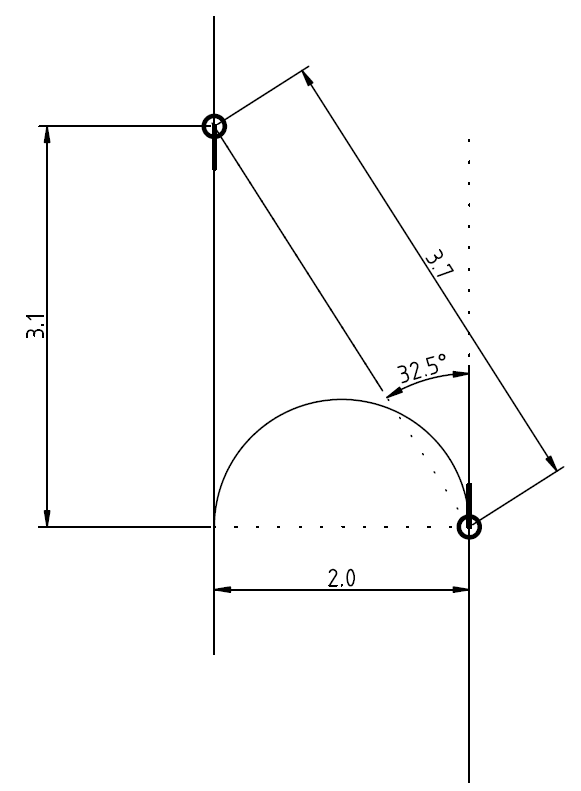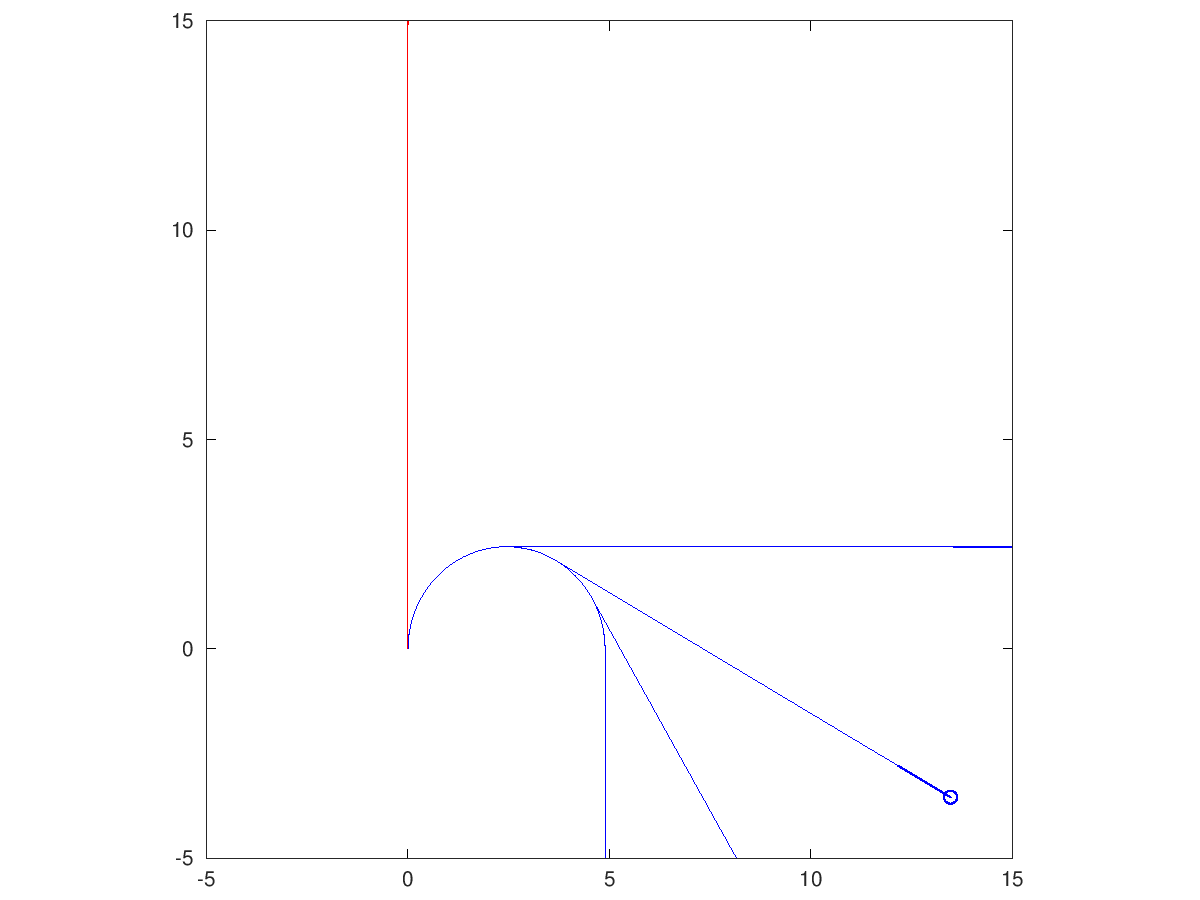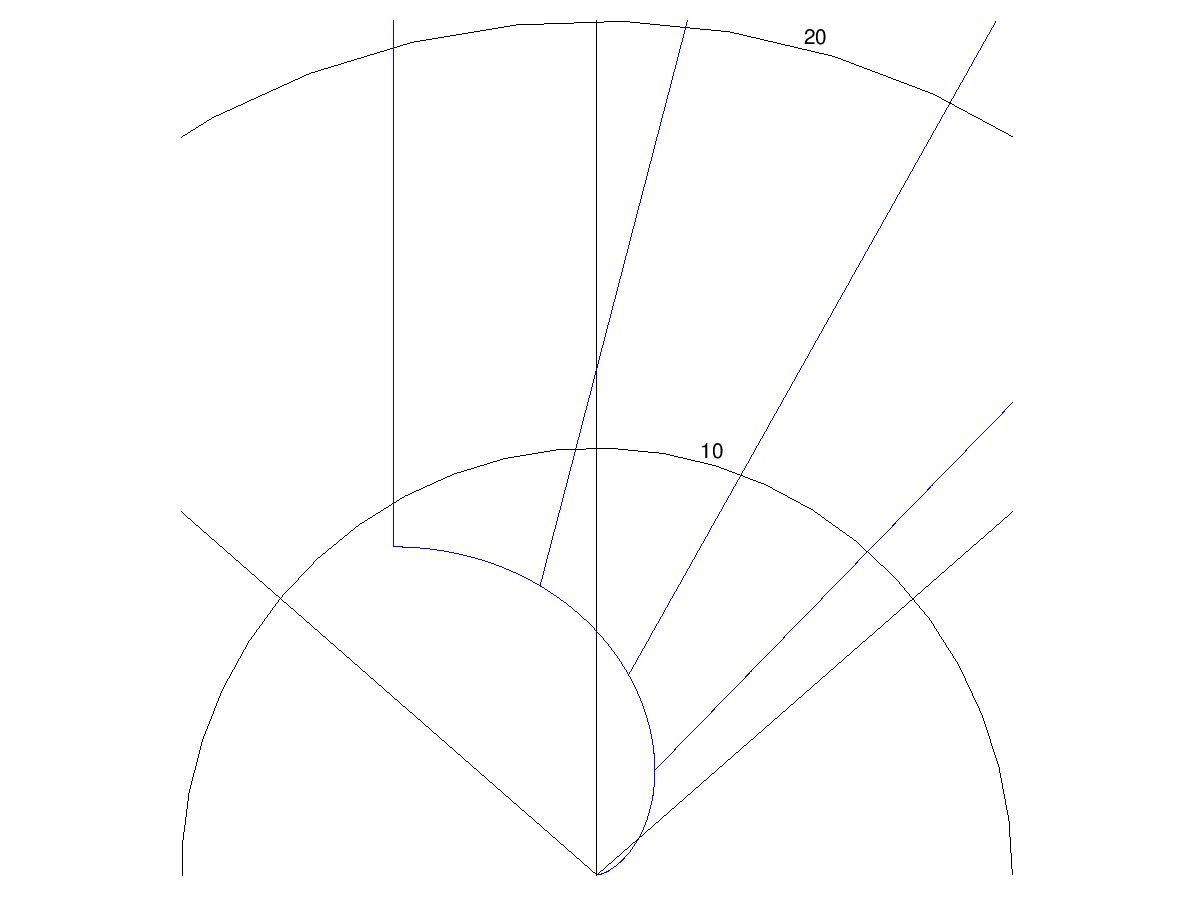Skillnad mellan versioner av "Intercept"
Urist (diskussion | bidrag) (Utkast till sida om intercept/join) |
Mags (diskussion | bidrag) |
||
| (12 mellanliggande versioner av 2 användare visas inte) | |||
| Rad 3: | Rad 3: | ||
==Intercept== | ==Intercept== | ||
| − | + | === Intercept basics=== | |
| + | An intercept is an act of getting close to a target. The target can be a friendly, neutral or hostile aircraft or unmanned vehicles such as drones or cruise missiles. An intercept can be done for many reasons including rejoining a group, visually identifying a non-cooperating aircraft, escorting a target or joining a tanker. | ||
| + | |||
| + | Sometimes an intercept is done with the goal of a fly-by. A fly-by intercept is generally flown with [[Air-To-Air_Glossary#Lead_Pursuit|lead pursuit]] until the very final moment when pure/lag pursuit is flown to avoid collision. The rest of this document will focus on joining intercepts since they are more complex than fly-by intercepts. | ||
| + | |||
| + | When the goal is to fly formation with the target, the intercept is called a join or rejoin. A joining intercept is generally flown with a sequence of events: | ||
| + | # [[Air-To-Air_Glossary#Lead_Pursuit|lead pursuit]] to get you close to the target. | ||
| + | # [[Air-To-Air_Glossary#Lag_Pursuit|lag pursuit]] to make room for the joining turn. | ||
| + | # [[Air-To-Air_Glossary#Pure_Pursuit|pure pursuit]] to start flying in the same direction as the target. | ||
| + | # [[Air-To-Air_Glossary#Lead_Pursuit|lead pursuit]] to close the final distance. | ||
| + | |||
| + | If you were already rear-aspect on the target at the start of the intercept, the intercept can be considered to start at step 4. | ||
| + | |||
| + | In many situations a joining intercept can be done without being faster than the target. However, an intercept can be done more rapidly by having a speed advantage. | ||
| + | |||
| + | === Tricks/tips === | ||
| + | |||
| + | * When the target is not moving through your field of view - meaning it stays fixed in your vision, you have achieved perfect lead pursuit and you are on a collision course. This is true for both sideways motion and up/down motion in your field of view. This is also true in radar displays. | ||
| + | |||
| + | * If faster than the target, aim for no more than 100 knots surplus at 3 NM distance, when you also start reducing speed. | ||
| + | |||
| + | === Basic principles for a joining intercept === | ||
| + | |||
| + | ; Lateral separation : For a high-aspect join you need a lateral separation ("sideways" separation) that depends on altitude, airspeed and bank angle. A rule of thumb is 40 000 feet (12 km / 6.5 NM) for a head on situation. The turn radius is half this distance. | ||
| + | ; Lag - pure - lead pursuit : You start the intercept by lag pursuit and the target should pass your centerline for a lead pursuit just before half the turn for a head on intercept. | ||
| + | ; Starting turn : For a head on intercept you need to start the turn when the range to the target is approximately 3.7 times the turn radius. The targets angle off the nose should always be 32.5 degrees at the start of the turn. | ||
| + | |||
| + | ===Head-on intercept geometry=== | ||
| + | [[File: intercept_geom_R2.png]] | ||
| + | |||
| + | ===Animated intercepts=== | ||
| + | ====Top view==== | ||
[[File: join_topviev.gif]] | [[File: join_topviev.gif]] | ||
| + | ====Radar PPI view==== | ||
| + | [[File: join_PPI.gif]] | ||
Nuvarande version från 3 februari 2022 kl. 16.49
Home >> Aviation guides >> Intercept
Innehåll
Intercept
Intercept basics
An intercept is an act of getting close to a target. The target can be a friendly, neutral or hostile aircraft or unmanned vehicles such as drones or cruise missiles. An intercept can be done for many reasons including rejoining a group, visually identifying a non-cooperating aircraft, escorting a target or joining a tanker.
Sometimes an intercept is done with the goal of a fly-by. A fly-by intercept is generally flown with lead pursuit until the very final moment when pure/lag pursuit is flown to avoid collision. The rest of this document will focus on joining intercepts since they are more complex than fly-by intercepts.
When the goal is to fly formation with the target, the intercept is called a join or rejoin. A joining intercept is generally flown with a sequence of events:
- lead pursuit to get you close to the target.
- lag pursuit to make room for the joining turn.
- pure pursuit to start flying in the same direction as the target.
- lead pursuit to close the final distance.
If you were already rear-aspect on the target at the start of the intercept, the intercept can be considered to start at step 4.
In many situations a joining intercept can be done without being faster than the target. However, an intercept can be done more rapidly by having a speed advantage.
Tricks/tips
- When the target is not moving through your field of view - meaning it stays fixed in your vision, you have achieved perfect lead pursuit and you are on a collision course. This is true for both sideways motion and up/down motion in your field of view. This is also true in radar displays.
- If faster than the target, aim for no more than 100 knots surplus at 3 NM distance, when you also start reducing speed.
Basic principles for a joining intercept
- Lateral separation
- For a high-aspect join you need a lateral separation ("sideways" separation) that depends on altitude, airspeed and bank angle. A rule of thumb is 40 000 feet (12 km / 6.5 NM) for a head on situation. The turn radius is half this distance.
- Lag - pure - lead pursuit
- You start the intercept by lag pursuit and the target should pass your centerline for a lead pursuit just before half the turn for a head on intercept.
- Starting turn
- For a head on intercept you need to start the turn when the range to the target is approximately 3.7 times the turn radius. The targets angle off the nose should always be 32.5 degrees at the start of the turn.


